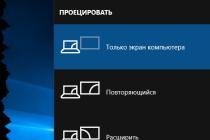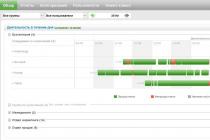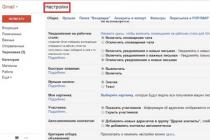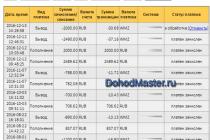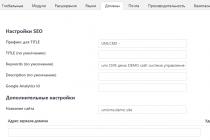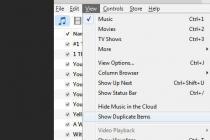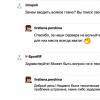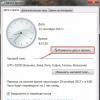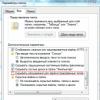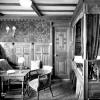LED lighting has firmly entered our lives, LED bulbs are already sold even in grocery stores, and on the shelves of household and construction supermarkets LED lamps even more than conventional incandescent and compact fluorescent (energy-saving) lamps combined.
Unfortunately, manufacturers often deceive customers by indicating on the packaging very high values of the luminous flux and the equivalent of an incandescent lamp. You buy a lamp that says "600 lumens, 60W incandescent equivalent", bring it home, turn it on and realize that it is clearly dimmer than a 60W incandescent lamp. Fortunately, under consumer rights law, LED bulbs can be returned to any store within 14 days (and to many hypermarkets within 30, 60 days, or even a year). Refunds are possible due to the fact that light bulbs (including LED ones) are still not considered a complex technical product.
In order to understand how much light the lamp actually gives, you need to measure its luminous flux. Usually, expensive laboratory equipment (goniophotometers, measuring integrating spheres) is used to measure the luminous flux (the total amount of light that a lamp gives), which costs tens of thousands of dollars. I propose a method that allows you to accurately measure the luminous flux of the lamp, spending only 87 rubles.
The main problem when measuring the luminous flux is the unevenness of the brightness of the light in different directions. different types lamps. Some lamps shine more forward, some shine more to the sides, some shine almost evenly in all directions.
To measure, you need to somehow get the average value of the brightness of the lamp. Typically this is done by placing the lamp inside an integrating sphere coated with an ultra-white matte barium sulfate paint. The light reflects off the walls many times and hits the sensor. The goniophotometer rotates the lamp horizontally, takes multiple brightness measurements at each pivot point, and calculates the total amount of light that the lamp gives. We'll do it easier.
We need a lamp with a spherical matte plastic cap. This matte cap will average the brightness of the lamp in different directions. Such a lamp can be bought for 87 rubles in Leroy Merlin stores. In the picture there is another lamp with a glass shade - do not pay attention: the stores themselves have what you need.

The exact name of the lamp is "Lamp NBB-60 (straight base), plastic ball, white", manufactured by Axioma LLC, Moscow.

Almost any Android smartphone can be used as a brightness meter (lux meter). Most smartphones have a light sensor (located above the screen) that is used to adjust the brightness of the screen based on ambient light.
V Play Market there are many luxmeter programs, I recommend installing the simple and convenient Sensors Multitool program. After starting the program, go to the Light tab and see the illumination value. The light meter for all smartphones is not calibrated, and for different smartphones it will show completely different values, which may differ from the real ones by half, but this will not affect the accuracy of our measurements.
We fix the lamp to any surface (I used a piece of plywood). We attach the smartphone to a carton of milk or juice with two rubber bands.

For the measurement, we need a reference lamp. I recommend using an IKEA 600 Lm 303.059.76 LED1466G9 lamp. This lamp has a luminous flux that exactly matches the declared one, and a very small variation in luminous flux from different copies.
Of course, you can use an ordinary incandescent lamp, but it is important to remember that, firstly, the luminous flux of incandescent lamps depends very much on the voltage in the network, and secondly, different copies of lamps produced by Russian and Belarusian factories can vary greatly in luminous flux. Nevertheless, you can always find out whether an LED lamp gives more or less light compared to an incandescent lamp.
We twist the shade, turn on the lamp, place the fixed smartphone in front of the lamp, start the program. We calibrate our measurement system: we shift the bag with the fixed smartphone so that the smartphone's luxmeter shows exactly 600 lux (if we have a 600 lumen lamp as a standard). Now we unscrew the reference lamp and screw in the lamp that we want to test without changing the distance between the lamp and the smartphone. The smartphone will display a value that will correspond to the luminous flux of the measured lamp.
I tested this simplest measuring setup on seven lamps with a luminous flux from 200 to 1000 lumens and two smartphones - Sony Z3 Dual and ZUK Z1. The measurement accuracy was 1-15%.
LED lamps have one feature - as they warm up, their luminous flux decreases by 11-12% within half an hour. We measured the lamps immediately after switching on, but since the reference lamp was also cold, all of our measuring system was more or less accurate.
You can increase the measurement accuracy if you use any luxmeter instead of a smartphone. Even the cheapest Chinese will do, for $ 10. It may be poorly calibrated, but again, this will not affect the accuracy of our measurements. It is better to warm up the reference lamp and those lamps whose luminous flux we want to measure for half an hour. The light meter must also be rigidly fixed and positioned at such a distance from the luminaire so that it shows exactly as many lux as the number of lumens given by the reference lamp.
I measured the luminous flux of the same seven lamps with the Lupine light-pulse meter.

The measurement accuracy has become significantly higher - the error is only 0-3%.
Note that all official accredited laboratories also have measurement discrepancies. The picture below shows the results of measuring the luminous flux of the same lamp in 54 different laboratories. The average discrepancy was 3%, maximum 26%.

So, on my knees, I managed to achieve the measurement accuracy that not all laboratories can boast of.
- a modestly designed digital light meter capable of measuring the current level of illumination in a room using the built-in sensors of a smartphone or tablet on an android platform: the main features of such a technical tool are intuitive control, excellent optimization, and a minimum of settings. Before the very first measurements, the developers from My Mobile Tools Dev insistently recommend that you look into the calibration section and go through several tests that allow you to bring the accuracy when "finding suites" to the maximum.
The preparatory procedures will take a minimum of time, but the result will really surprise (according to users, without the start-up setting, the measurement accuracy is close to zero, but it is worth completing several tests and a real light meter can be safely replaced with a digital copy -)! But first things first:
1. Interface. A black static background, a gray font blending in with the decorations, just a few buttons allowing you to either look into the settings section or start new measurements.


From the interesting - the ability to save statistics and make a kind of "sample" for the day, week or month - for example, the average value of the suites in the room, maximum or minimum. Information, of course, purely for the sake of "interest", nothing more. But for the opportunity to measure everything around the developers, we should also thank - the sensations are unforgettable.
2. Graphs. All the plates, menus and graphs displayed in the center of the screen look much more interesting. For example, Current state illumination, there - for the recent hour, and even further - for the last day.


There are many strips, everything can be viewed and studied.
Of the minuses - advertising is sometimes very annoying, sometimes the system shows strange results, sometimes it is impossible to measure at all.
Otherwise, a free lux meter for android can help a lot - be sure to try and share with your friends!
Is it worth buying expensive equipment for measuring illumination if smartphone manufacturers have developed special programs that allow you to take measurements using a regular smartphone?
We will understand this topic.
On the website of one of the smartphone manufacturers they write: "In order not to find yourself in a difficult situation, usually this problem is solved with the help of a special device - a luxmeter, but today it is better to replace expensive inventory with the app of the same name for the iPhone, which can be downloaded from the App Store ..."
"The application" Luxmeter "to determine the degree of illumination uses data received from the front or rear camera smartphone, and is a real pocket light meter. The program is calibrated using an ATT-1508 luxmeter: the calibration sample is 5000 measurements, and the coefficient of determination is 0.87 (with the next updates - 0.9 over the entire measurement range) - all this guarantees exceptional measurement accuracy. "
Or read "The" Luxmeter "application was created so that its users could save money on the purchase of expensive professional equipment" !!!
Do you believe this? I doubted for a very long time. Maybe they really write. I downloaded a program for myself and measured the illumination. I got 53 suites on my desktop and decided that everything was not going smoothly here. But I decided that I had to try and compare it with a good light meter, but everyone didn’t get to the experiment.
And finally, the company DIAL, a professional in the field of lighting technology, who developed the DIALux and DIALux evo programs, which also has its own laboratory and carries out measurements and scientific activities, got down to business and tested smartphones and applications for measuring lighting.
The experiment involved:
| Manufacturer | Platform |
| iPhone 5 | iOS |
| iPhone 5 S | iOS |
| iPhone 6 | iOS |
| Sony Xperia Z 1 | Android |
| Sony Xperia Z 2 | Android |
| Samsung Galaxy S 5 | Android |
| Nokia Lumia 925 | Windows Phone |
Software:
| Name | Manufacturer | Platform | Calibration capability | Price |
| Galactica luxmeter | Flint Soft Ltd. | iOS | No | is free |
| LightMeter by whitegoods | Whitegoods | iOS | Yes | is free |
| LuxMeterPro Advanced | AM PowerSoftware | iOS | Yes | 7,99€ |
| Luxmeter | KHTSXR | Android | Yes | is free |
| Light Meter Pro | Mannoun.Net | Android | Yes | is free |
| Lux Light Meter | Geogreenapps | Android | Yes | is free |
| Sensor List | Ryder donahue | Windows Phone | Yes | is free |
For the experiment, the lighting levels were measured from 3 types of lighting sources: low-voltage halogen lamp, compact energy saving lamp(2700K) and LED lamp (3000K).
For ease of understanding, see the results for LEDs in the graph. That is, the measurements were carried out for all lamps, but the results were published only for the light source: LED.

Measurements were taken for all smartphones. For this, in a special laboratory, illumination levels of 100 lux, 500 and 2000 lux from the tested light source were mapped out.
The results are surprising. Only in one case, when measuring 500 lux, the iPhone5 showed a result of 484 lux, which is a very close value. In all other cases, measurements were in the range from 37 to 113%.
After such results, DIAL decided to check several identical iPhone smartphones 5 and applications "Galactica" and "LightMeter by whitegoods".

Unfortunately, there was no unity of results here either.
DIAL experts conclude that, unfortunately, it is not necessary to measure illumination levels using smartphones outside of a professional outside home environment. Based on experiments with various smartphones and various software it was found that such measurements have neither accuracy nor correctness. It all depends on the case.
Based on the article: "Luxmeter-App vs. Messgerät: Sind Smartphones zum Messen geeignet?" by Jaqueline Goldschmidt und Thomas Pittner
Photos from DIAL.de
Working with light, it is impossible to develop without daily study of trends and market novelties. One of our last discoveries was an application, thanks to which you can measure the amount of light in a room using an ordinary smartphone. Of course, from a professional point of view, we could not remain indifferent to such a challenge. The German Institute for Applied Lighting Engineering (DIAL GmbH), in which exactly the question of interest to us was considered: can a smartphone become a worthy replacement for a light meter?
Luxmeter versus smartphone: can a dedicated app become an alternative to a measuring device?
If such a replacement really justifies itself, then it would not be so much a revolution, but, at least, a very advantageous offer. Judge for yourself, a luxmeter is not a cheap pleasure. But almost everyone has a smartphone. AND special applications either free or cheap. Since our company professionally works with light, the idea of measuring photometric parameters using a telephone touches us. But, in fairness and curiosity, we decided to conduct an experiment. Purpose of the study: to compare the results of the work of the corresponding applications with the indicators of our standard light meter.
Equipment under test
Our experiment was attended by iphone different series as well Sony phones, Samsung and Nokia:
Software
We have selected the following applications (most of them are free) and installed them on each of the systems:
| Name | Manufacturer | Operating system | Calibration capability | Price |
|---|---|---|---|---|
| Galactica luxmeter | Flint Soft Ltd. | iOS | No | - |
| LightMeter by whitegoods | Whitegoods | iOS | there is | - |
| LuxMeterPro Advanced | AM PowerSoftware | iOS | there is | 7,99€ |
| Luxmeter | KHTSXR | Android | there is | - |
| Light Meter Pro | Mannoun.Net | Android | there is | - |
| Lux Light Meter | Geogreenapps | Android | there is | - |
| Sensor List | Ryder donahue | Windows Phone | there is | - |
For reference
The control measurement was made with a calibrated PRC Krochmann light meter (Model 106e, special model, class A).
Light sources used
We chose three different light sources for the test:
- low voltage halogen lamp;
- compact fluorescent lamp (color temperature 2700 K);
- LED (color temperature 3000 K).
To simplify our research, we decided to keep one light source - LED.
Test conditions
The test took place in a room without daylight or artificial lighting. We have placed the lights on the horizontal surface. The illumination of 100 lx, 500 lx and 1000 lx was set in turn on them. The photometric head of our light meter was located perpendicular to the luminaire axis. Then, in the same way, we placed smartphones with installed applications. Front-camera and the brightness sensor were located in the same place where the photometer was previously located.
This arrangement suited all applications except the paid Luxmeter Pro Advanced, as it uses reflected light from a surface to measure illumination. This application also provides settings for the type of light source, distance to it, etc.
Some applications allowed for calibration, and if possible, we carried out it in accordance with the manufacturer's instructions, namely at 100 lux.
results
During our test, we found that although some applications could be calibrated to a specific value, it was difficult to pinpoint exactly. Thus, either the step was large, or the value of 100 lux was not set at all (for example, the maximum value that could be set on the iPhone 5 with LightMeter by whitegoods is 34 lux). The deviations from the reference values were often quite high (up to 113% for the Samsung Galaxy S5 with Geogreenapps "Lux Light Meter"). When using the 500 lux reference, the smartphone display showed 1,063 lux. The lowest deviation of 3% was on the iPhone 5 with "LightMeter by whitegoods." At 500 lux, this smartphone showed 484 lux. At the same time, we cannot say that this particular combination will always lead to the smallest possible deviations. In the case of using a value of 100 lux and the same application, the deviation reached 89%, and the device showed 11 lux.
We also noticed that the displayed values on devices from Sony, Samsung and Nokia were significantly higher than the reference values, while they were significantly lower on the iPhone. The average variance across all Android smartphones and Windows Phone apps was approximately 60% higher than the controls. The discrepancy between the values measured by the various iPhones was 60% below the reference values.
We also noticed that various apps installed on smartphones from Samsung and Sony showed similar values. Most likely, these devices use a luminance sensor to measure illumination rather than a camera.
In some Samsung models you can switch to the mode engineering menu using the combination * # 0 * #. By selecting the "Light Sensor" item, you can find out the estimated illumination without installing the application. So in this case special program may not be needed. However, the figures on these devices also deviated from the reference value in the range of 37% -113%.
Will the results be the same on similar smartphones with the same applications?
To test this, we used 4 identical iPhone 5s with Galactica Luxmeter and LightMeter by whitegoods installed on them. Unfortunately, we were disappointed. All four smartphones performed completely differently.

We believe that the reason for such fluctuations is the difference in components in the phones. The user does not notice such deviations in everyday use, but they are noticeable during direct testing.
Is there always a percentage deviation from the reference value?
If you always use a smartphone with the same app, you can assume that you can measure fairly accurately by knowing the percentage deviation from the reference value. But is this percentage always the same?
In order to check this, we measured the illumination at 10 lux, 100 lux, 1000 lux and 10,000 lux with using iPhone 5 placed on an optical bench in a black room. The increase in brightness can be very precisely set by adjusting the distance between the light source and the receiver.
The radiation source was again used LED lamp with a color temperature of 3000 K. In this test, we looked at the performance of two different applications. It turned out the values different programs deviate from each other, in some cases up to 358% (12 lux to 55 lux at a standard of 100 lux). If we consider the percentage of deviations from the reference values, then we will not see any pattern.

Using the Galactica Luxmeter application, the values were above the reference values by 180% at 10 lux and 50% below the reference values at 10,000 lux. LightMeter by whitegoods was calibrated to 10 lux. With reference 100 lx, the deviation was 88% downward, and with 10,000 lx - 59%. The values of all other applications were also significantly lower than the control ones, and the percentage of deviations itself was changing all the time.
In addition, we have found that measurements taken with the front and rear cameras show different values. In addition, some applications never show 0 lux, even if the camera is not exposed to light and it is covered with a dummy.
Conclusion
The results prove that serious illumination measurements are only possible with professional equipment. It is equipped with a calibrated sensor to ensure that the illumination is assessed according to the sensitivity of the human eye when daylight... In addition, the devices allow you to measure the amount of light depending on the angle of incidence of the beam. Smartphones cannot do either one or the other, otherwise they cannot perform their functions like a telephone.
App developers do not claim that smartphones can replace professional devices. The claim that some instruments allow calibration sounds effective, but unfortunately it is technically almost impossible to set the desired value. Even when using the same app on identical smartphones, the evaluation results differ.
So, unfortunately, apps don't really help much, not even getting general idea about illumination. Moreover, the result may turn out to be radically opposite and mislead the user.
Therefore, if you really need to measure the illumination, use a luxmeter, and leave your phone for calls to your loved ones.

